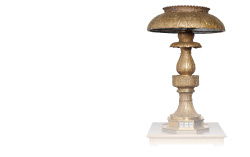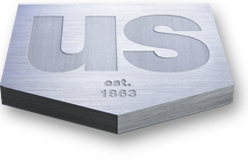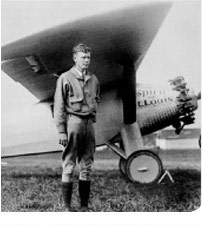
In 1929, Mercantile Bancorporation ancestor, Mississippi Valley Trust Company, loaned $15,000 to help finance Charles Lindbergh’s historic transatlantic flight. Mercantile merged with Firstar Corporation in 1999 and later became U.S. Bancorp.
A Rich Heritage
On July 13, 2013, U.S. Bank will celebrate its 150th anniversary. Our rich history has shaped our present and positioned us for a strong future.
Since 1863, our company has expanded through organic growth and through numerous acquisitions. We have managed through times of prosperity and times of hardship. We have focused our efforts externally on growth and development and, when necessary, we have focused internally to right the course.
We are always mindful of the responsibility we hold to help our customers achieve their financial goals; to support and strengthen the communities, and this country, that we serve; and to increase the value of our shareholders’ investment.
We trace our earliest roots to 1853 when Farmers and Millers Bank in Milwaukee opened its doors with $50,000 in capitalization — eventually becoming First Wisconsin and ultimately Firstar. State Savings Institution, with just $8,500 in capital and one $800-a-year teller, opened in St. Louis in 1855, later to become part of the Mercantile Trust Company founded by Festus J. Wade in 1899 — the forerunner of Mercantile Bancorporation.
The action moves to The First National Bank of Cincinnati, which opened for business in 1863 while the Civil War raged just across the Ohio River. In 1988, The First National Bank of Cincinnati grew into Star Banc Corporation.
The First National Bank of Cincinnati was established under National Charter #24, signed by Abraham Lincoln’s Comptroller of the Currency, Hugh McCullough. It’s the charter our company still operates under today and is one of the oldest active national bank charters in the nation.
About this same time, The First National Bank of St. Paul was chartered in 1864 after doing business for some 11 years as Parker Paine & Co. A year later, The First National Bank of Minneapolis received its charter in 1865 — before that it had been a private banking house called Sidel, Wolford & Co. These two First Nationals formed a holding company in early 1929, which then became known as First Bank Stock Corporation until it took the name First Bank System in 1968.
Meanwhile, across the Great Plains and the Rocky Mountains, The United States National Bank of Portland, in Oregon, was chartered in 1891 by several prominent individuals in the local business community.
These banks thrived as independent entities and were often the largest commercial bank in their respective marketplaces. Through the years, some benefitted from in-market mergers and acquisitions during the early decades of the 20th century and wider-spread expansions during the 1980s and 1990s. One such transaction brought Colorado National Bank into the First Bank System family in 1993 and West One Bancorp into U.S. Bancorp in 1995.
Of particular note, in 1902, the U.S. National Bank of Portland was merged into the Ainsworth National Bank of Portland, but the decision was made to keep the U.S. National Bank name. This choice turned out to be auspicious when, 11 years later, a federal law prohibited other banks from using United States in their names from that time forward. U.S. National was among the first banks to form a one-bank holding company — called U.S. Bancorp.
Through the past 150 years, hundreds of fine banks, whose customers, branches, expertise and assets combined with these ancestor banks, helped to make us a strong, sound company.
Transformational mergers occurred during the 1990s, as Star, Firstar and Mercantile merged to become the new Firstar, and First Bank System and U.S. Bancorp combined under the U.S. Bancorp name. And on February 27, 2001, Firstar and U.S. Bancorp became the new U.S. Bancorp, building a strong and forward-looking foundation on which to continue our growth.
It’s a great heritage we enjoy — and we work hard to preserve the legacy.
The plaque above marks the original location of the San Miguel Valley Bank in Colorado, later the Bank of Telluride, which subsequently became part of the U.S. Bank family. San Miguel Valley Bank’s claim to fame (or infamy) is in being the first bank that Butch Cassidy ever robbed (June 24, 1889).
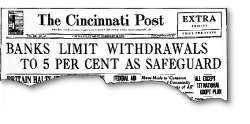
In 1933, banks were reeling. To avoid a panic, the Cincinnati Clearing House authorized banks to limit withdrawals to five percent of a customer’s account. Only The First National Bank of Cincinnati paid out in full to any customers who asked. For decades, the bank and its employees used that tale to indicate First National’s strength and soundness.
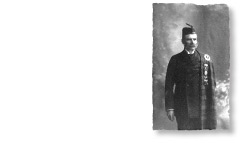
Donald Macleay (August 1834 – July 1897) immigrated from Scotland at the age of 16. Later he established a wholesale and shipping business in Portland. He invested in Oregon railroads and is generally credited with founding the U.S. National Bank of Portland, a predecessor of U.S. Bancorp.

Rising above the skyline of downtown Minneapolis is the former headquarters building of First Bank System, the name of U.S. Bancorp until 1997. Its merger with Firstar in 2001 created the “new” U.S. Bancorp.
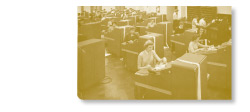
A view of a long-ago stage in the evolution of bank technology. Today U.S. Bancorp processes tens of millions of transactions a month.
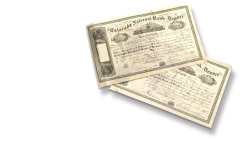
Colorado National Bank stock certificates issued in 1893. Colorado National Bank changed its name to U.S. Bank after the $8.4 billion merger of CNB’s Minneapolis parent, First Bank System Inc., with Portland, OR-based U.S. Bancorp in 1997.
